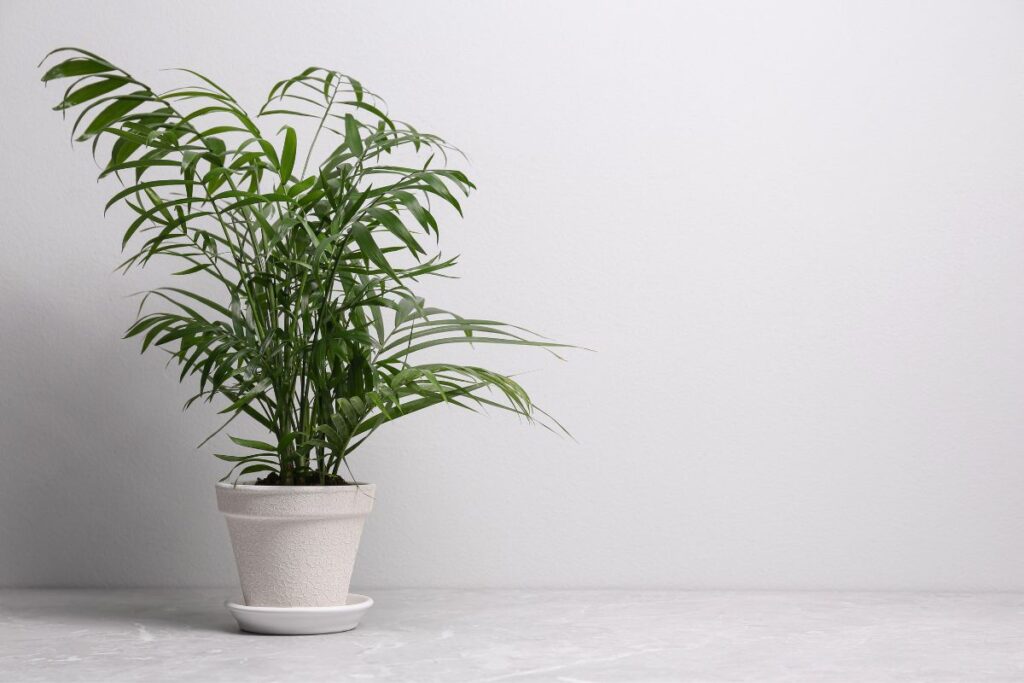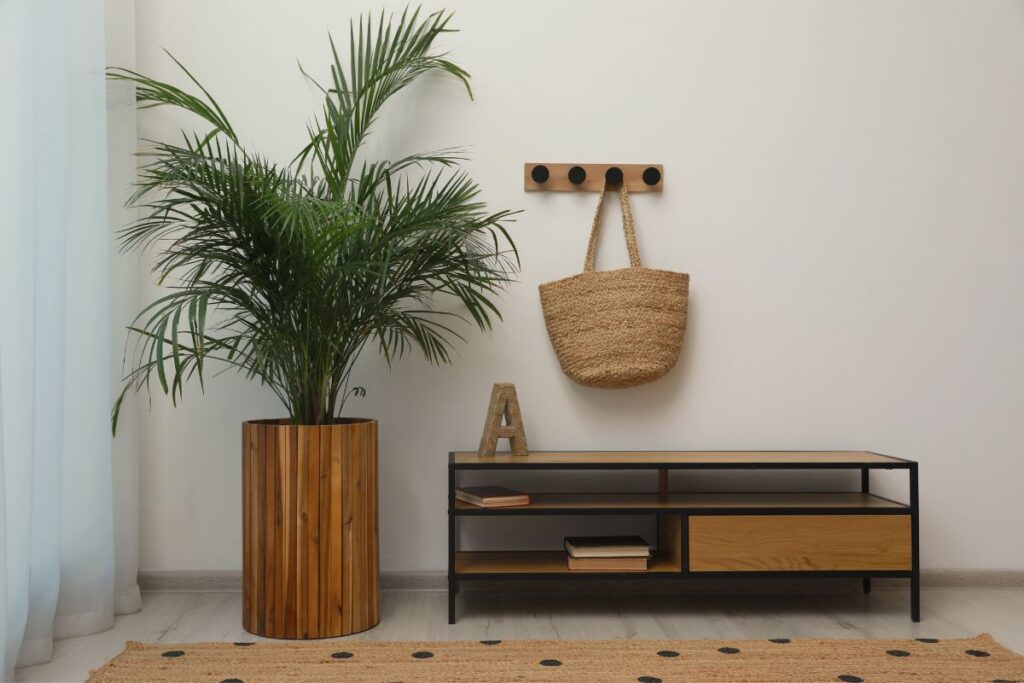Are you a cat owner with Majesty Palm plants in your house? If so, you may have wondered if they are poisonous to cats. As an animal and plant lover, it is important for you to know the safety risks of these plants and how to protect your furry friends from them. In this article, we will discuss whether or not Majesty Palms are toxic to cats, as well as other common household plants that can be dangerous for cats. Additionally, we’ll provide tips on how to keep cats away from these plants and ensure their safety. Keep reading to learn more about keeping your cat safe around the house!

Contents
Are Majesty Palm Plants Poisonous To Cats?
No, majesty palm plants aren’t poisonous to cats – they’re actually considered safe. You won’t have to worry about your furry friend getting sick if they eat the fronds of this plant. Though it’s not necessarily beneficial for them, you don’t have to worry about toxic symptoms or any other kind of hazardous reaction. So when cat-proofing your home, consider including majestic palms on the list of pet-safe plants that are suitable for feline behavior.

6 Indoor Plants That Are Poisonous to Cats
1. Aloe Vera
You may be surprised to hear that Aloe Vera can actually be toxic to cats. If your cat has access to an Aloe Vera plant, it is important that you take measures for its protection and safety. To do this, make sure you have the necessary protective gear like gloves when handling the plant and consider keeping it out of reach of your cat. Additionally, if your pet consumes any part of the plant, seek veterinary care immediately as a precautionary measure.
It can also help to familiarize yourself with natural remedies to identify symptoms of poisoning in cats and know what kind of behavior changes or physical symptoms indicate toxicity from consuming Aloe Vera. Knowing how to identify poisonous plants will help prevent future incidents and ensure that your furry friend remains safe and healthy at all times!
2. Snake Plant
Be aware that snake plants can be toxic to cats, so take care to keep them out of reach. If you have a cat, it is important to familiarize yourself with the plant care requirements of any plants in your home as well as which ones are toxic for pets. Snake plants contain saponins, which can cause digestive upset if ingested by cats. Symptoms may include lethargy, vomiting, and diarrhea. In order to ensure pet safety and provide your cats with proper nutrition and behavior enrichment, make sure that all potentially poisonous plants like snake plants are kept away from curious paws or noses.
3. Peace Lily
Take caution around the Peace Lily if you have cats, as it is known to be toxic for them. The Peace Lily is a popular houseplant that can add a touch of beauty to any home, but unfortunately, if ingested by cats it can cause serious health issues. It’s important to identify potentially poisonous plants before you bring them into your home and keep all plants out of reach from curious cats.
To stay safe, avoid the Peace Lily altogether and opt for some of its non-toxic alternatives such as Spider Plants or Boston Ferns which offer similar benefits without the risks associated with common plant toxins. When introducing any new plants into your home take precautionary measures like placing them in an inaccessible location such as up high on shelves or elevated furniture pieces away from curious cats and children alike.
4. Sago Palm
Moving away from the Peace Lily, let’s take a look at another popular indoor plant – The Sago Palm. Unfortunately, the Sago Palm is one of the most toxic plants for cats and should always be avoided if you have any furry feline friends around your home. Not only are they highly toxic to cats, but they also require a great deal of care and maintenance as well.
However, despite all this, there are still many benefits to having a Sago Palm in your home. A variety of different varieties exist that can help liven up any room in your house with their beautiful foliage. Identifying a Sago Palm is also relatively easy since they often have distinctive fronds and trunks. Nevertheless, it’s important to keep in mind that even though these plants may look harmless, they come with significant risks if your cat decides to get curious about them!
5. Money Plant
The Money Plant (Epipremnum aureum) is one of the most popular houseplants due to its easy care and attractive foliage. Unfortunately, it can be toxic to cats, so it’s important to keep your feline friend away from this plant. Propagating, watering, planting, fertilizing and caring for a Money Plant are all activities that should be done carefully when cats are around. While some cats may ignore the plant altogether, others may become curious and try to nibble on it – which can lead to an upset stomach or worse. If you choose to have a Money Plant in your home, make sure that it is securely placed in an area where your cat cannot access it.
6. English Ivy
Be careful! English Ivy can be dangerous for your feline friends. The toxic effects of English Ivy on cats can range from mild to severe, depending on the amount eaten or touched. Keeping cats safe from all types of plants in your home should be a priority if you’re an owner of a pet cat. It’s important to take proper care when handling any type of plant, as there are many indoor alternatives that are much safer and won’t put your furry friend at risk.
When it comes to pet safety, it’s best to research and observe the kind of plants you have in your home before allowing them around cats. There may be certain species that look harmless but can be harmful in the long run, like English Ivy. As always, prevention is key for keeping cats safe and healthy, so make sure to double-check what kind of plants you have around your home before bringing out those kitty paws!
How To Keep Cats Out Of Plants

Keeping cats away from plants can be difficult, so it’s important to consider ways to keep them out of toxic plants. Cat proofing is the most effective way to ensure that cats and other animals stay away from your plant. A few steps you can take in cat-proofing include being mindful of where you place your plant, selecting cats-proof varieties of plants, and considering how much time and care you are willing to commit to caring for the plant.
When selecting a location for your plant, make sure it is somewhere that is out of reach for cats. If necessary, use barriers such as screens or fences to block access. Additionally, select cat-proof varieties of plants such as Majestic Palm plants instead of more toxic ones like English Ivy. Lastly, be aware that some houseplants require lots of attention and maintenance—which may not be ideal if you have an active pet around! Taking these steps will help ensure the safety of both your pets and your majestic palm plant!
